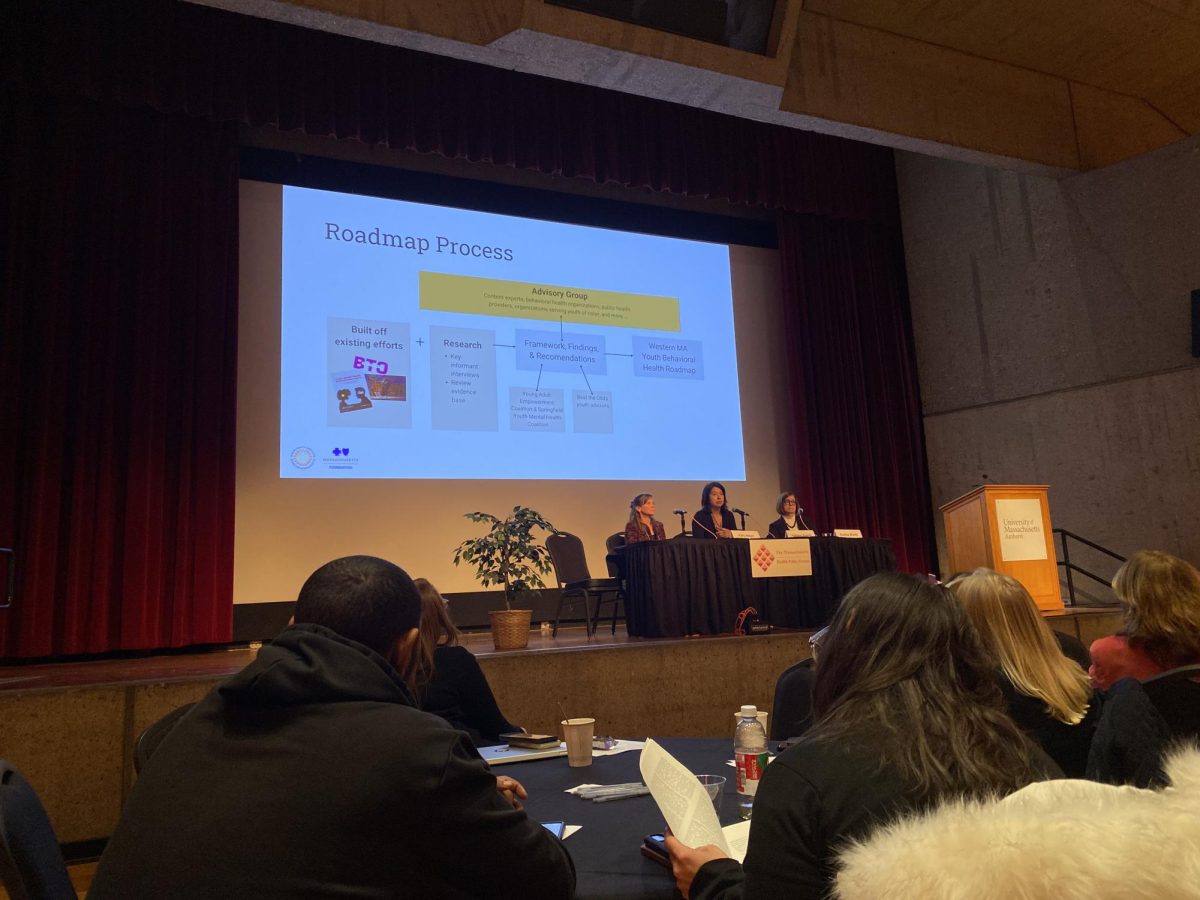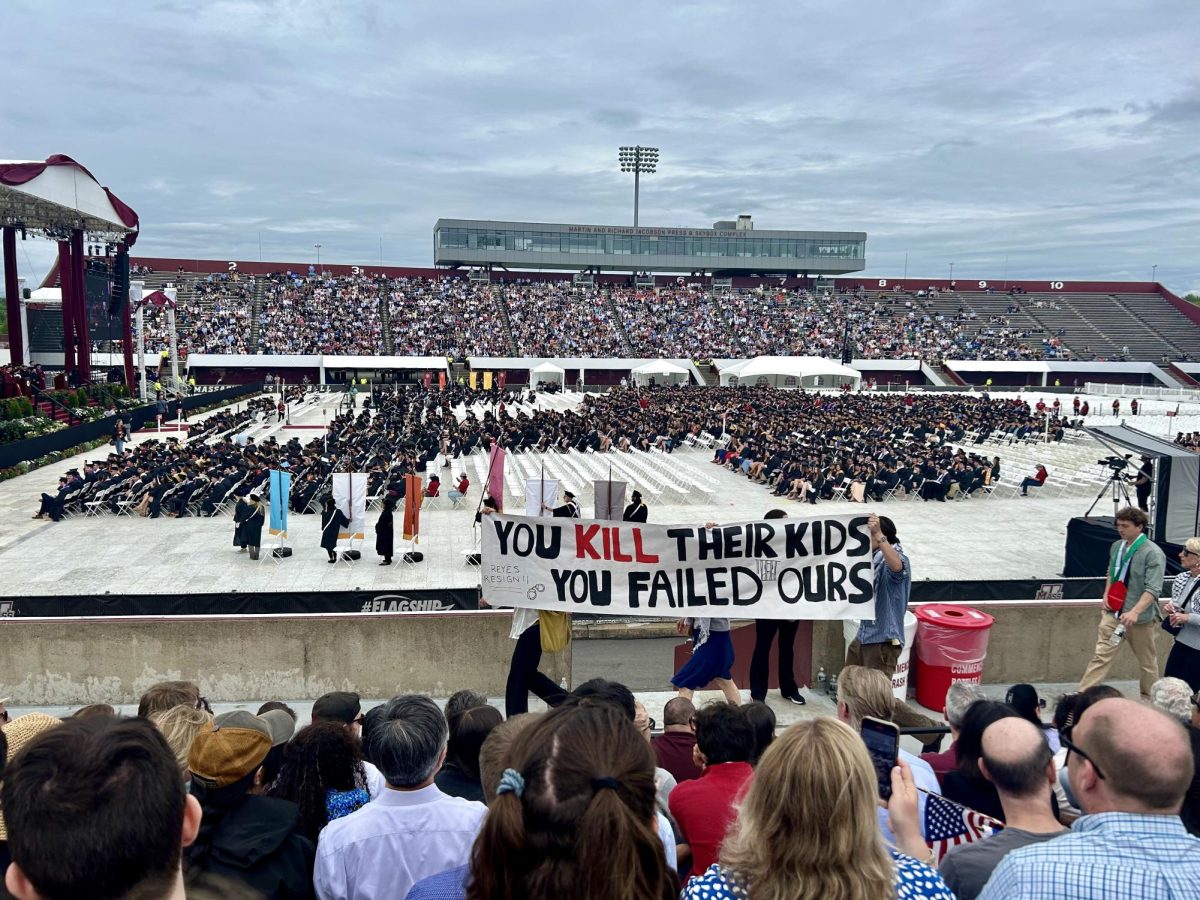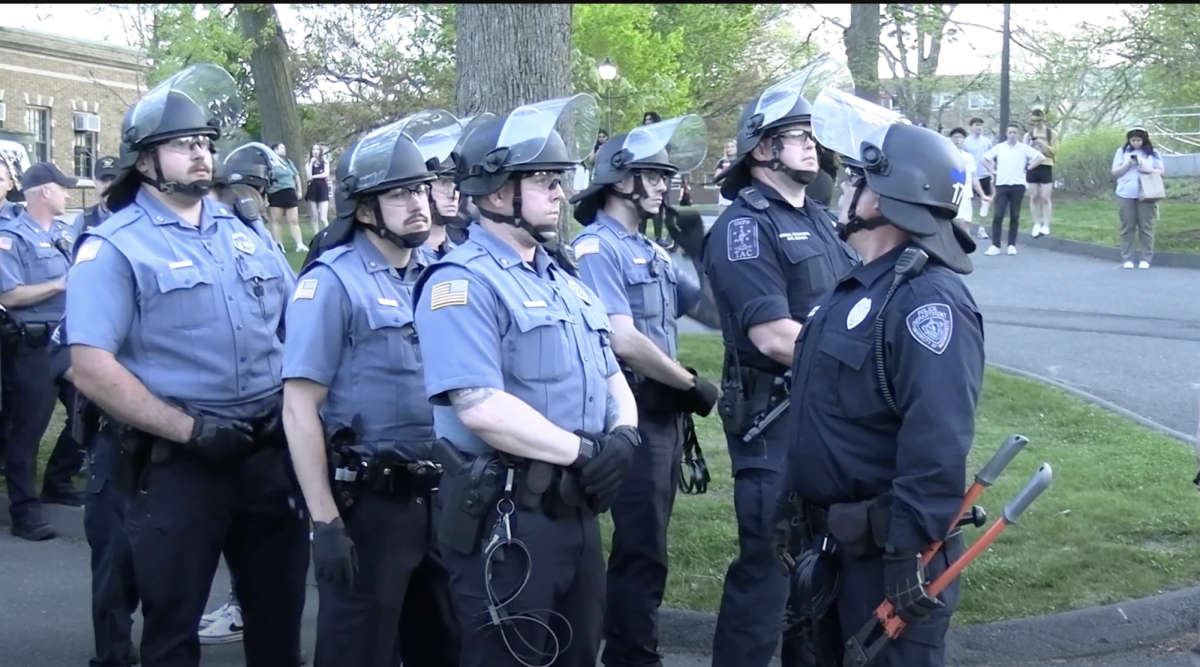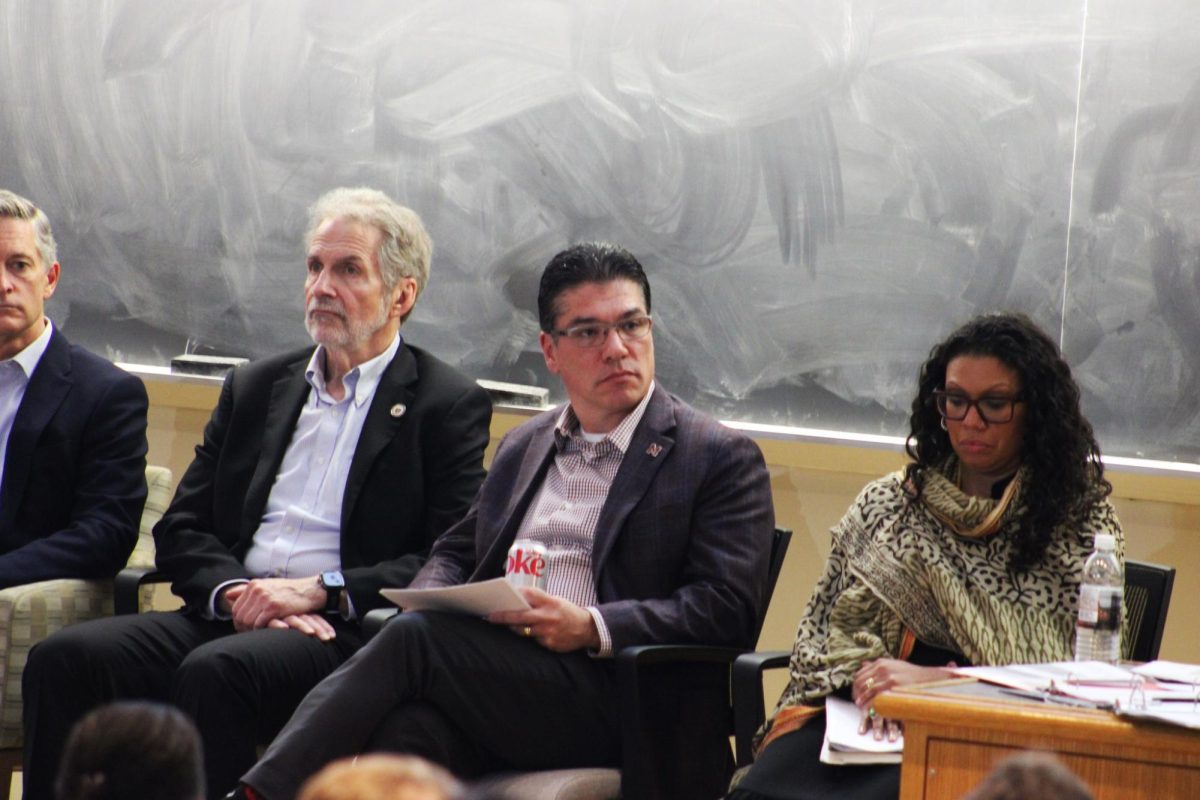On Wednesday, Nov. 1, the Public Health Institute of Western Massachusetts (PHIWM) and the University of Massachusetts School of Public Health and Health Sciences co-hosted “A Roadmap for an equitable behavioral health ecosystem in western Massachusetts.”
As stated on their website, the goal of the event was to “[understand] how to support and mitigate poor mental health, as well as increase equitable access to behavioral and mental health resources [which] continues to be a challenge in Massachusetts.”
Last year, PHIWM had held a similar event outlining a new statewide behavioral health roadmap, soon followed by the state senate’s adoption of the addressing barriers to mental health care bill.
Now, they want to concentrate on smaller internal challenges, leading to this event’s focus on youth in western Massachusetts.
State Sen. Cindy Friedman said, “Now that we’ve made significant strides in reforming the structure and increasing access to mental health care, it’s time for us to take targeted action to have an impact on the smaller facets that make up this aggregate crisis.”
According to Phil Johnston, chairman of the Massachusetts Health Policy Forum, a youth study from early 2020 in western Massachusetts found that 45 percent of people ages 14 to 24 felt “so sad or hopeless almost every day for two weeks or more… that they stopped doing usual activities.” These statistics have only worsened after the COVID-19 pandemic.
The roadmap was created based on research done by PHIWM over the past year. PHIWM follows a “health equity framework,” meaning their research pays high attention to data collection as well as community engagement and feedback. Their process prioritized involving youth opinions and recommendations. They also consulted experts and community members working with youth such as care providers, social workers and school faculty based in western Massachusetts.
The researchers’ philosophy centered around considering prevention and health promotion on top of treatment and intervention; their plan addresses the complex roots of the youth mental health crisis to reduce crisis situations before they occur. As Kathy Mague, senior vice president of the Behavior Health Network, put it, “therapy is not the panacea,” but rather “homes, schools, workplaces and communities” all play a role in aiding against the youth mental health crisis.
The result of their process was a roadmap with five main components: social connection, social-emotional learning, addressing social media, destigmatization and normalization and fostering community-clinical linkages.
Regarding social connection, results showed that among children and teens, social isolation increases risk of depression and anxiety while youth are still recovering from the effects of social distancing and online schooling during the COVID-19 pandemic. One of the team’s recommendations is to make social connection a priority within local governments and organizations.
“There should be a design for social connection in all environments, policies, programs and practices, while [thinking] about both peer and intergenerational opportunities,” Mague added. “[The idea] is to create and support more programs that connect youth through mentoring and peer mentoring [and to] meet youth where they are at.”
Social and emotional learning (SEL) is a part of most school curricula in various forms, but schools struggle with its implementation. The group’s recommendations were to use existing resources like UMass’ BIRCh Project, including SEL in non-classroom settings and incorporating transformative SEL. The community has a large role to play as well, so they recommended educating parents and caregivers and working with youth programs in addition to enforcing policy changes.
To address social media, the study found that over a third of youth use it “almost constantly” and that the effects of it can be both positive and harmful, especially for youth with marginalized identities. They recommend professionals not condemn social media, but educate on both the advantages and disadvantages of social media use, create safe spaces to talk about youth experiences and implement changes in legislature to regulate content and privacy.
Lavagn Claudio, director of family support and training at the Gandara Center, added, “I try to explain to caregivers instead of alienating social media, jump in with them and help them navigate the waters.”
In terms of destigmatization and normalization of youth mental health, results showed that the stigma was improving over time due to generational, cultural and gender differences, explained Kathleen Szegda, senior director of community research and evaluation at PHIWM. This progression affects youth’s ability to acknowledge their own mental health challenges and their willingness to seek help.
Szegda also recommended care providers to partner with media organizations and faith communities for better outreach.
When discussing community-clinical linkages, she explained that prevention should be embedded into the clinical and that the clinical should be embedded into the community. There should be coordinated efforts between the community, schools and clinics to improve youth mental health.
After the presentation of the roadmap, the event had a reactor panel including five individuals who work to support youth mental health.
One of the speakers was Tamera Crenshaw, founder of Tools for Success Counseling, an organization that provides counseling services for BIPOC patients and addressing stigmas unique to their communities. She noted how her work aligns with the roadmap’s community-clinical linkage goal: “Because because we know a lot of our youth of color often, at times, were not seeking professionals for that mental health treatment, we go to coaches, we go to barber shops, we go to the people in our communities. So, we really want to affiliate ourselves with people who are doing the same.”
Claudio, another panelist, stressed the relation between destigmatization and social connection in communities, especially with regards to diverse cultures. “We cannot talk about mental health and eliminate the biases and the way we were raised,” he said. “Black and brown community…we don’t talk about mental health. That was a no. I remember my grandfather telling me you got broad shoulders for a reason. Carry that.”
The panel also agreed on the roadmap’s preventative “upstream” approach. Kat Allen, a co-coordinator of the Communities that Care Coalition of Franklin County and North Quabbin, said, “The real core is about connection to school, connection to community, connection to family and building those social emotional skills… We cannot treat our way out of the mental health crisis that we’re in right now.”
Annika Singh can be reached at [email protected]. Mahidhar Lakkavaram can be reached at [email protected] and followed on X @Mahidhar_sl.




















